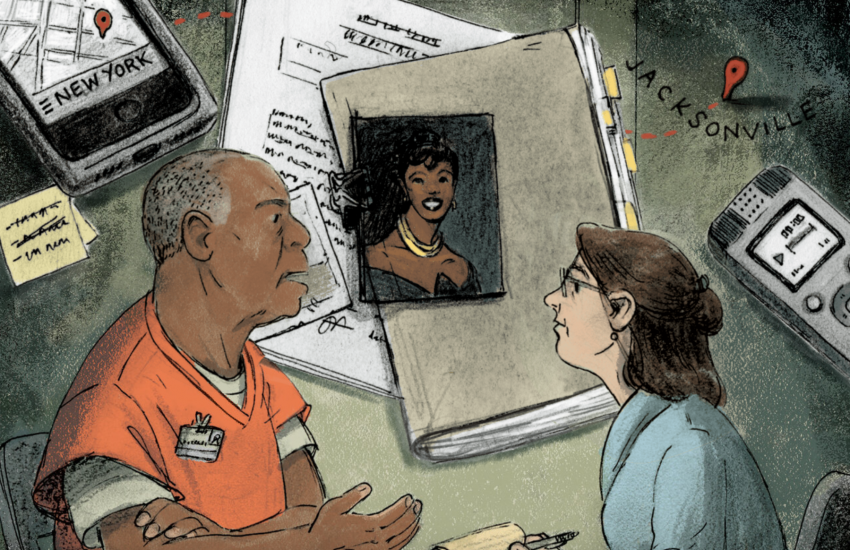How Vox uses animation to make complicated topics digestible for everyone
With almost 12 million subscribers on YouTube, Vox has established itself as one of the most prominent video media outlets. Explainer videos such as “Why we all need subtitles now” and “Teaching in the US vs. the rest of the world” have garnered millions of views with thousands of comments.
It is no surprise that there is something Vox has mastered that other media outlets have yet to hone: strategic use of animation for audience engagement. Storybench spoke with Joey Sendaydiego, an art director for the video team at Vox, to get a better understanding of how he uses animation to digitally capture the attention of young adults.
Originally from the Philippines, Sendaydiego started working for Vox in 2019 in his home country before relocating to New York City.
“It’s a lot of problem solving every day – a lot of meetings, pre-production meetings and brainstorming. As much as I like getting to engage with other members of the team, I also like brainstorming by myself, sketching, experimenting on AfterEffects,” he said.
Vox averages around one to two uploads a week and Sendaydiego explains that every day is unique, depending on the topic of that week’s video.
“We’re doing all sorts of videos. Gaza and Israel [videos] – that’s a totally different video from a culture video about subtitles. I’ve set the style and art direction of each of those videos. Most of the time, we try to come up with something unique,” he said.
Indeed, they have come up with unique visuals. For example, in “Teaching in the US vs. the rest of the world,” all visuals were handcrafted from construction paper. The stylistic choice to use colorful paper art to convey a child’s arts and crafts project draws the audience in, regardless of age – although millennials make up the bulk of Vox’s demographic, said Sendaydiego.
According to Gitnux Marketdata Report 2024, 65% of people identify as visual learners, meaning they best grasp a concept through visual aids and demonstrations, such as a graph or infographic. In Vox’s teaching video, the comparison of work hours in the United States vs. other countries in the world was illustrated by a paper clock turned pie chart.
“I try to get into the story as deeply as I can, early in the script writing process. At the end of the day, YouTube is a very visual medium. What is the most essential thing to show? It’s a lot of experimentation and creativity. I love that Vox allows us to do that,” he said.
So, what happens when a topic isn’t particularly visual? For one of Sendaydiego’s favorite videos, “Computers just got a lot better at writing,” he wanted to demonstrate that although artificial intelligence models conventionally lack color, he made it work. We think of black and white numbers, words and binary code, but he was able to visualize computers’ brains.
“For every video that I do, I try to find something unique and hold on to [it as] my anchor for the rest of the video. This one, you would see flying text – words flying around. I was like ‘Oh, that could be a repeating motif and I can build visuals on top of that,’” he said.
With more serious topics, such as the Israel-Hamas war, Sendaydiego explains that the most important factors that he and his team keep in mind is being respectful and accurate of the situation. Because animation seldom uses real or graphic photos, he stresses the importance of not downplaying serious topics with misleading positivity.
“As much as we like doing explainer videos and mapped animations, these are stories we’re doing here, there’s actual people [involved]. There are stakes involved, so you want to get that right. You don’t want to be producing stuff just because it’s beautiful or pretty,” he said.
He used an example of a video he worked on that explained the murder of Fred Hampton of the Black Panther Party – a Black power organization founded in 1966. After struggling to contact someone close to the story to help aid their narrative animation, they had to figure out another plan.
“I thought the best thing to do at that point was to pay homage to the style of protest posters they did. We called back to that style and translated it into animation, and I thought that worked pretty well,” he said.
Now, the video has garnered almost 3 million views.
With such a large audience, comes great responsibility. Maps in particular are one of the most tedious graphics to do, according to Sendaydiego. Changing borders make curating a map a little more complicated, but luckily there are “other people [at Vox] helping us make these things accurate.”
Vox measures success by analyzing the retention rate of videos, which is the length of time that a viewer stays watching a video without clicking off. It is different from views, which is when a user just clicks on a video, but not necessarily stays on.
“I think we average four minutes, which is incredibly high for Youtube…so we want to stay in that range or even higher. If we can keep eyes on a video for longer, we’re going to be very happy,” he said.
Even the people behind-the-scenes at Vox’s video team make mistakes. Unlike some other media outlets like The New York Times that can take months to produce a documentary, Vox takes “two to three weeks max” to hit publish on Youtube.
“We’ve had slip-ups where we had to pull a video because something was inaccurate, but we try to avoid it as much as we can,” he said.
But there’s always factors that Vox cannot control, such as the algorithm or their videos’ similarities to content other creators curate.
“It’s refining our processes internally and making sure we work better [together] with every video that we make – that’s the focus on our team,” he said.
For journalists that are interested in incorporating more animations into their work to better engage their audience, Sendaydiego suggests not getting too caught up in minute details.
“You don’t want it to look perfect because that might make it look more like an ad than an editorial piece. Fixating on very technical aspects of production is an easy trap to fall into,” he said, “if it’s interesting, people will want to watch it.”
- How Vox uses animation to make complicated topics digestible for everyone - April 18, 2024
- Meet the founder: The B-Side’s Andrew Grillo on knowing your audience - March 12, 2024
- How Qing Wang connects her podcast ‘The Weirdo’ to a young Chinese audience - November 22, 2023





